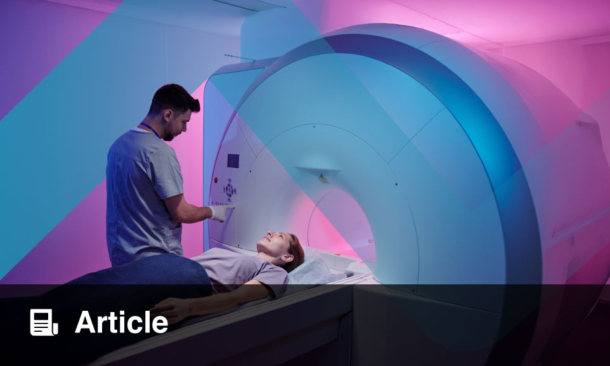Author: Jenna Lorge, EMJ, London, UK
Citation: EMJ Innov. 2025;9[1]:16-18. https://doi.org/10.33590/emjinnov/CVBH6558.
![]()
PELVIC floor dysfunction can have debilitating and devastating consequences on the health and well-being of women, yet these issues are often under-researched and not discussed openly in wider society. This has led to stigma for people experiencing symptoms, as well as increased barriers to treatment. At the Global Innovation and New Technology (GIANT) Health Event 2024, hosted in London, UK, an expert panel explored the role of technology and digital health in addressing this issue, as well as the innovative Women’s Health Hub concept gaining traction in the UK.
THE UNSPOKEN REALITY
To highlight the importance of raising awareness around how common postnatal pelvic floor symptoms are, Janet Barter, President of the Faculty of Sexual and Reproductive Health and Clinical Lead at Tower Hamlets Women’s Health Hub, UK, recalled to the audience a story from when she was a new general practitioner (GP) many years ago. While conducting a home visit, she was accidentally sent to the incorrect doorstep of a woman with the same name. However, what began as an administrative error turned out to be a blessing in disguise as the woman confided in Barter that she had avoided leaving her house for the past 12 years due to incontinence. This had completely impacted her and her children’s social lives, but she had been too embarrassed to go and talk to someone about it.
“We see it day to day,” explained Imogen Pallister, Highly Specialist Physiotherapist, Pelvic Health Team Lead, Barts Health NHS Trust, UK. “Patients coming through that don’t socialise anymore with their friends, they can’t speak about it with their families, they end up a lot more housebound. It results in the breakdown of marriages and relationship issues.”
About 25% of people who are postnatal will have symptoms, which may include prolapse, incontinence, bowel or bladder pain, or sexual pain and discomfort, highlighted Sunita Sharma, Chelsea and Westminster Hospital, London, UK. “So, the consequences are huge, but there are barriers in accessing care. There’s a stigma on raising concern about their symptoms.”
This stigma causes women to not seek care at the time of symptom appearance, but instead to wait and avoid speaking up due to shame or embarrassment. “I am patient-focused and see lots of these conditions coming in that haven’t been addressed properly, that get normalised in society, and then, unfortunately, end up coming into my clinics with a much, much bigger problem,” Pallister said.
This not only reduces the patients quality of life but also leads to a worsening of symptoms, creating more complications and thus more costly issues to fix. “These are huge drains on the National Health Service (NHS) because we then get these patients at a much later stage with vastly different problems and needing a lot more intervention down the line,” Pallister continued.
“We need to start with raising the awareness of our patients that we do see about what can happen, what we can expect, but actually also what services are out there, and what can be done to stop this from becoming a 15-year-old history of urinary incontinence because they had children.”
WHY ARE WE HERE?
The systemic neglect of women’s health has deep roots in sexism and racism within biomedical research, explained Rehan Khan, Consultant in Obstetrics and Gynaecology, Royal London Hospital, UK. Historically, studies have been based on male physiology, with women’s health considered an afterthought. Even now, research in this field remains underfunded and understudied, he explained.
This has in turn led to a lack of awareness and education about issues that primarily affect women. “We know that we’ve got antenatal education classes that have been around forever, and a lot of this focuses on ‘This is what’s happening to the baby. This is what we do. This is how we change nappy.’ But, actually, nobody really discusses with them how you actually give birth, what can happen when you do give birth, and what you do afterwards,” Pallister said.
This has led to cases like that of Barter’s accidental patient from many years ago: women who feel shame about their life-impacting post-partum symptoms but do not have the knowledge of how common they actually are or the possible treatment options for them.
THE WOMEN’S HEALTH HUBS
Enter the Women’s Health Hubs: an innovative, patient-centred community service designed to bridge these gaps in care. These hubs aim to provide holistic support by integrating primary, secondary, and community healthcare services, a “single point of access”, explained the panel’s Chairperson, Ishi Bains, NHS GP and Regional Primary Care Clinical Lead for Gynaecology, UK.
These hubs are popping up around the country, including in Hackney, where they operate within GP practices. However, this is not a one-size-fits-all model, with its inclusion differentiated to meet the individualised needs of those patients in different areas. “The bigger picture is really that Women’s Health Hub is a concept. It’s about improving care in a collaborative, holistic way,” Bains said.
The success of Women’s Health Hubs depends on addressing several systemic barriers, including access, education, shared language, and economic impact.
Ensuring Equitable Access
Technology is a cornerstone of the Hub model, offering scalable solutions to reduce inequalities. Digital platforms can provide multilingual resources, virtual consultations, and online support groups. For many women, particularly those with sexual pain or trauma, discussing sensitive issues from the privacy of their homes may feel safer.
“You would think that most women wouldn’t want to talk in a group about their sexual progress, their sexual pain, their fear, their stigma, their anxieties, but actually it’s about understanding that you’re not alone,” Barter explained. “This is what they tell us, that the biggest value is understanding that they’re not the only one.”
Designing with the Community in Mind
Khan underscored the importance of co-designing these solutions with the communities they serve: “The thing is, if you don’t co-design it with the communities who are going to use the technology, you could fall into a trap that is hundreds of years old. This is what happened with biomedical research.”
This includes ensuring that information is available in multiple languages and communication types. “It’s got to be there for people who don’t find accessing information digitally easy. It’s got to be there for people who don’t speak English. It’s got to be there for people who have other communication problems. They might be deaf, for example,” Barter explained. “The whole point of Women’s Health Hubs is to reduce inequalities, and we’re partway there, but we’re not there yet.”
Creating Sustainable Solutions
However, digital solutions alone are not enough. They must be sustainable, accessible, and integrated with in-person care. “You can’t overpromise and underdeliver; if you’re going to do it, it’s got to work, and it’s also got to be sustainable. The history of women’s health is you get champions, we get very excited to do lots of amazing stuff, and then move on, and it all dies away. So, whatever we do has to be sustainable,” Barter said.
DOING IT DIFFERENTLY
For the first time, women’s health is a national priority in the UK. The Women’s Health Hubs represent a push for collaboration, innovation, and patient-centred care.
“This is not about childbirth on its own, and it’s not about the postpartum period,” Khan said. “These problems are lifelong, and events that happen during 15 minutes of pushing will affect the next 50 years of your life.”
This model offers a blueprint for systemic change, combining early intervention, education, and technological innovation. By mapping the patient journey and streamlining care, these hubs have the potential to transform lives.
For Barter, it all comes back to the definition of madness, “where you keep on doing the same thing and expecting something different to happen. If we want something different to happen, then we need to do something differently.”







